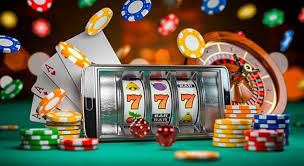
The Art of Game Concept: Crafting Visual Worlds
In the realm of video game development, the importance of game concept art cannot be overstated. This creative process serves as the blueprint from which immersive worlds and captivating characters are born. Game concept art not only shapes the visual direction of a project but also plays a crucial role in conveying the game’s narrative, mood, and overall aesthetic. It is a powerful tool that bridges the gap between the imagination of the developers and the experience of the player.
The creation of game concept art begins with brainstorming and ideation. Artists, writers, and designers collaborate to explore the core themes and ideas that will drive the game’s story. This initial stage is often characterized by sketching and creating rough outlines of characters, environments, and key objects. Each stroke of the pencil or click of the mouse contributes to a larger vision, allowing the team to visualize the essence of their project.
At this stage, concept art may take many forms, from illustrations focusing on specific characters to expansive landscapes that capture the essence of the game world. These pieces serve not only as a visual guide for the development team but also as an enticing glimpse for potential players and stakeholders. The quality and creativity of the concept art can significantly influence the early interest in a game and help secure funding or support.
One of the most critical aspects of game concept art is character design. Characters are often the heart and soul of any video game; they embody the player’s journey and experiences. Concept artists must take into account a multitude of factors when designing characters, including personality traits, backstory, and gameplay mechanics. Each element informs their design choices, from the color palette to clothing styles and weapon choices, ensuring a cohesive and compelling visual identity that resonates with players.

For instance, consider a character who is intended to be a mighty warrior. The concept artist might choose to incorporate elements that suggest strength and resilience—broad shoulders, a fierce expression, and clothing that withstands the rigors of battle. In contrast, a more whimsical character may feature exaggerated proportions, vibrant colors, and playful accessories, all of which contribute to an entirely different emotional experience for the player.
Environment design is equally crucial in establishing the game’s atmosphere. Game worlds must be crafted with attention to detail, creating an immersive backdrop that enhances the player’s experience. Concept artists work to develop settings that reflect the game’s themes, whether they are fantastical realms filled with magical creatures or gritty urban landscapes teetering on the edge of dystopia. From the sweeping vistas of a fantasy kingdom to the claustrophobic alleyways of a cyberpunk city, each illustration must evoke a specific emotional response from the audience.
The process of environment design involves thorough research and understanding of various artistic styles. Concept artists draw inspiration from real-world locations, other art forms, and existing video games, blending them into cohesive visual narratives. They often create mood boards and color palettes that set the tone for the environments, ensuring each element works harmoniously within the game world.
Moreover, concept art serves as an essential communication tool throughout the development process. As the game evolves, so do its artistic requirements. Concept art provides a reference point for 3D modelers, animators, and texture artists as they translate 2D illustrations into immersive three-dimensional experiences. It ensures that the visual style remains consistent, allowing for a more refined and polished end product.

As technology advances, so too does the medium of game concept art. The rise of digital art tools has transformed how concept artists approach their craft. Software such as Adobe Photoshop, Corel Painter, and Autodesk Sketchbook allow for a versatile and dynamic art-making process. This evolution enables artists to experiment with different styles, iterate quickly on concepts, and share their work with collaborators seamlessly.
The digital revolution has not only impacted the tools artists use but also the way concept art is shared with the community. Online platforms like ArtStation and social media enable artists to showcase their work to a global audience, receiving feedback and recognition from peers and fans alike. This visibility fosters a sense of community and encourages the exchange of ideas, techniques, and inspirations.
As the video game industry continues to expand, the demand for high-quality concept art grows alongside it. Games are increasingly seen as a form of art and storytelling, leading to greater investment in the creative aspects of development. Concept artists are often now regarded as vital collaborators in the creation of engaging narratives and player experiences. This recognition elevates the status of game concept art, showcasing its significance not only within the industry but also in the context of contemporary art.
In conclusion, game concept art is a fundamental pillar of video game development, blending creativity, storytelling, and technical skill. It lays the groundwork for captivating narratives and immersive experiences that resonate with players. As technology continues to push the boundaries of game design, the role of concept artists will only become more significant, reminding us of the artistry involved in creating the games we love. The next time you dive into a video game, take a moment to appreciate the visual world before you—the result of countless hours of imagination, collaboration, and artistry in the realm of game concept art.
The Art of Game Concept Crafting Visual Worlds
The Art of Game Concept: Crafting Visual Worlds In the realm of video game development, the importance of game concept art cannot be overstated. This creative process serves as the blueprint from which immersive worlds and captivating characters are born. Game concept art not only shapes the visual direction of a project but also plays a crucial role in conveying the game's narrative, mood, and
